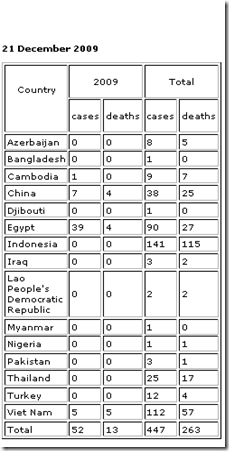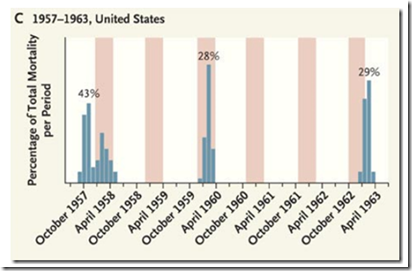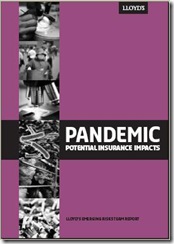# 4207
The CDC has posted FluView for week 51, ending December 26th , 2009. Unlike the past few weeks where we’ve seen declines in most indicators across the board, this week is a mixed bag.
During the last reporting week certain indicators went up, while others went down or remained the same.
Visits to doctors for ILI increased slightly over last week, while hospitalizations remained the same.
P&I (pneumonia & Influenza) deaths increased over the last week and has moved above the epidemic threshold this week, after dropping below last week.
There were four pediatric flu-related fatalities added to this year’s count during the past week.
I’ve excerpted some of the data and graphs below, but follow the link to read it in its entirety.
2009-2010 Influenza Season Week 51 ending December 26, 2009
All data are preliminary and may change as more reports are received.
Synopsis:
During week 51 (December 20-26, 2009), influenza activity decreased slightly in the U.S.
- 154 (3.9%) specimens tested by U.S. World Health Organization (WHO) and National Respiratory and Enteric Virus Surveillance System (NREVSS) collaborating laboratories and reported to CDC/Influenza Division were positive for influenza.
- All subtyped influenza A viruses reported to CDC were 2009 influenza A (H1N1) viruses.
- The proportion of deaths attributed to pneumonia and influenza (P&I) was above the epidemic threshold.
- Four influenza-associated pediatric deaths were reported. Two of these deaths were associated with 2009 influenza A (H1N1) virus infection and two were associated with an influenza A virus for which the subtype was undetermined.
- The proportion of outpatient visits for influenza-like illness (ILI) was 3.2% which is above the national baseline of 2.3%. Two of the 10 regions (1 and 10) reported ILI below region-specific baseline levels.
- Four states reported geographically widespread influenza activity, 13 states reported regional influenza activity, the District of Columbia, Puerto Rico, and 19 states reported local influenza activity, Guam and 13 states reported sporadic influenza activity, and one state reported no influenza activity, the U.S. Virgin Islands did not report.
U.S. Virologic Surveillance:
WHO and NREVSS collaborating laboratories located in all 50 states and Washington D.C., report to CDC the number of respiratory specimens tested for influenza and the number positive by influenza type and subtype. The results of tests performed during the current week are summarized in the table below.

Pneumonia and Influenza (P&I) Mortality Surveillance
During week 51, 7.7% of all deaths reported through the 122-Cities Mortality Reporting System were due to P&I. This percentage was above the epidemic threshold of 7.4% for week 51.
Influenza-Associated Pediatric Mortality
Four influenza-associated pediatric deaths were reported to CDC during week 51 (Florida [2], Massachusetts, and Texas). Two of these deaths were associated with 2009 influenza A (H1N1) virus infection and two were associated with an influenza A virus for which the subtype is undetermined. The deaths reported during week 51 occurred between August 30 and December 19, 2009.
Outpatient Illness Surveillance:
Nationwide during week 51, 3.2% of patient visits reported through the U.S. Outpatient Influenza-like Illness Surveillance Network (ILINet) were due to influenza-like illness (ILI). This percentage is above the national baseline of 2.3%.











